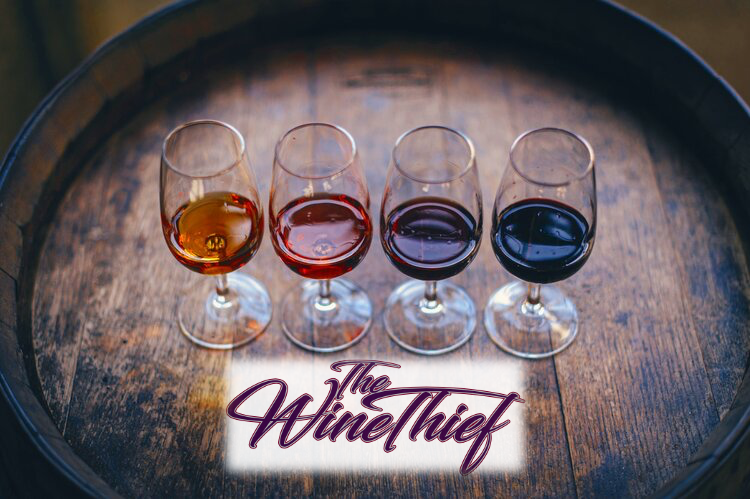Posted: Oct 17, 2017

Across Napa and Sonoma, vintners finally were able to return this past weekend to fire-scarred Wine Country to see firsthand the fate of their wineries and vineyards.
On Monday, four more confirmed significant damage to their wineries, vineyards or wine stock. That brings the list of wine-damaged properties to 22 in Napa, Sonoma and Mendocino Counties, since fires started on Oct. 8.
Here’s a closer look at the wineries that were damaged or destroyed by the fires:
Ahh Winery: The winery building at Glen Ellen was completely destroyed, along wth its water system, reports owner Bruce Rector. “We are OK,” he says. “The good news is we have two years of inventory.” The boutique winery offers a large selection of pinot noir, and the Rectors are known as much for their organic food as for their wines.
Ancient Oak Cellars: The home vineyard at Siebert Ranch, in the Russian River Valley, experienced significant loss because of fire. “I’m very sad to report that our house, two big beautiful redwood barns, gorgeous tasting counter, etc, etc are gone,” the winery wrote on Facebook. The bottled wines and wines in barrel, however, were safe at other locations and the owners said Wednesday they believe the vines were spared. The Siebert Ranch vineyards grow grapes for the pinot noir; the zinfandel, cab sauvignon, merlot and cab franc are grown on other estates.
Backbone Vineyard & Winery: Sattie Clark said the small family winery in Redwood Valley burned to the ground in the Redwood fire, “along with all our wine made over the past five years.” Backbone specializes in Bordeaux varietals from its steeply terraced vineyard.
Frey Vineyards: The country’s first organic and biodynamic winery lost its Redwood Valley winery and bottling facility but a wine-storage warehouse is still standing, along with the wine tanks, a majority of the crush pad and all but 10 percent of the estate vineyard. Frey also broke ground two months ago on a new winery site on West Road in Redwood Valley and that was untouched by the fire. Their wines include cabernet sauvignon, chardonnay, merlot and white zinfandel.
Hagafen Cellars: Napa Valley’s first kosher winery sustained fire damage to the back of its winery building, outdoor tanks and crushpad, according to owner Ernie Weir. The winery has produced gold medal-winning chardonnays, cabernet francs and pinot noirs. Since its first release in 1980, Hagafen Cellars wines also have been served several times at the White House.
Hamel Family Wines: The vineyards in Sonoma burned. The Hamel Family wines are well known for their distinctive labels featuring a badger (which came to be because three generations of Hamels are University of Wisconsin alum). Their wines include isthmus, zinfandel, sauvignon blanc and rose, all produced organically using biodynamic practices.
Helena View Johnston Vineyards: Owner Charles Johnston said everything was “annihilated” at his organic winery off Highway 128 in Calistoga, where for 26 years he has grown cabernet sauvignon and cabernet franc vines. His winery is known for its limited production complex Bordeaux style reds produced entirely from Napa Valley grapes.
La Rochelle Winery: Owner Chuck Easley told the Sonoma Index-Tribune that he lost his home and Kenwood vineyards, but his harvest was already complete. La Rochelle has received high praise for its small-lot, single vineyard pinot noir and chardonnay.
Mayacamas Vineyards: The winery atop Mount Veeder in Napa survived the fire, but a private tasting and events building known as “the residence” was destroyed. That private tasting room was the only space where tastings were held. The winery has existed since 1889 and is known for its cabernet sauvignon and merlot wines.
Paradise Ridge Winery: The Santa Rosa winery was completely destroyed by the Tubbs Fire. The Byck family said on their website that they will rebuild the winery that was a popular wedding venue. “The winery may be broken but our estate vineyards survived, which is foundation of our wine.” The winery lost its Russian River Valley tasting room, but still has its tasting room and herb garden on its Kenwood property. Among its popular wines are chardonnay, zinfandel, cabernet sauvignon and a sparkling blanc.
Oster Cellars: Ken and Teresa Fetzer’s Redwood Valley winery, which specializes in limited-production cabernet sauvignon, was destroyed in the Redwood Fire. A true small family winery, daughter Adrianna Oster Gozza is the winemaker.
Paras Vineyard: The Napa winery’s main building was destroyed by fire. While Paras no longer produces its own brand of wine, it does provide grapes to other wineries in the region.
Patland Estate Vineyards: The estate and vineyards off Soda Canyon Road in Napa were destroyed by the Atlas fire, according to winemaker Jay Buoncristiani. The winery specializes in red wines produced from grapes from the nearby Stagecoach Vineyard, which is still being assessed for damage, and their estate vineyard. The Patland Estate was well known for its Italian aesthetics.
Pulido-Walker’s Estate Vineyard: The Estate Vineyard of Mark Pulido and Donna Walker in Napa was destroyed, according to Christi Wilson, executive director of The Rancho Santa Fe Foundation. The Napa vineyard was one of three operated by Pulido-Walker. On the winery’s website, the property was said to “boast extensive kitchen and ornamental gardens as well as a producing olive grove.”
Roy Estate: The winery off Soda Canyon Road in Napa reportedly was extensively damaged by the Atlas fire. Roy is best known for its cabernet sauvignon and a proprietary red blend. The grapes are grown on a 17-acre estate just below the Stags Leap District.
Segassia Vineyard: A company spokesperson confirmed that the Napa winery owned by the Cates family has burned. Segassia’s cabernets regularly scored 93 points or higher by Wine Enthusiast. The mountain vineyards date to 1864.
Signorello Estate Vineyards: The winery and residence in the Stag’s Leap District of Napa was destroyed, but proprietor Ray Signorello says he will rebuild. The winery featured an impressive wine tasting and food pairing experiences. Their wines include cabernet sauvignon, syrah and chardonnay, including a cuvee chardonnay that scored 98 points by Wine Advocate.
Sill Family Vineyards: Owner Igor Sill said his Napa winery in the Atlas Peak district is a “total and complete loss. Amazingly the vineyards are untouched.” The winery did not offer public tastings but was still highly regarded for its cabernet sauvignon, chardonnay and rose.
Sky Vineyards: The owner’s home and vineyards in Napa’s Mt. Veeder district burned but the winery is still standing. The 14-acre vineyard sits at an elevation of 2,100 feet and features Zinfandel and Syrah vines. The winery has been farmed organically for a decade.
Storybook Mountain Vineyards: The historic winery in Calistoga is safe, but a separate building holding library wines — bottles going back several vintages and more — was lost. Ironically, the 1964 Hanley fire burned the 100-acre property that Jerry and Sigrid Seps bought in 1973 and turned into one of the valley’s premiere wineries for zinfandel and Bordeaux red blends. Seps notes that wine critic Robert Parker even picked Storybook Mountain as one of the six best zinfandels in the world.
VinRoc: The Atlas Peak district winery in Napa and proprietor and winemaker Michael Parmenter’s home were destroyed. “Total loss, everything gone except our (wine) cave,” he said. The boutique winery takes its name from the rock-lined mountain vineyards and produces cabernet sauvignon, a red blend and chardonnay. The wine cave is a highlight feature of the winery.
White Rock Vineyards: Owned by the Vandendriessche family since 1870, the winery confirmed it was destroyed by the fire that ravaged nearby Soda Canyon Road in Napa. Photos showed the charred remains of the family’s 6,000 square foot wine cave, carved into the volcanic hillside in 1987. The winery produces chardonnay, cabernet sauvignon and an estate claret.
By ANN TATKO-PETERSON
October 16, 2017
Source: MercuryNews.com
Go-Wine's mission is to organize food and beverage information and make it universally accessible and beneficial. These are the benefits of sharing your article in Go-Wine.com


The Wine Thief Bistro & Specialty Wines is a locally owned small business in downtown Frankfort, IL offering world class wines in a relaxed, casual gathering spot for friends and family. Offering world class virtual tastings and touchless carryout.
https://www.twtwineclub.com/aboutus
Go-Wine 25 Great Wineries in US selection prioritizes quality, value and availability.
www.go-wine.com/great-wineries-in-america
Tasting wine is a nice experience, but visiting the places in which wine is made is a magic moment. Available in New York City for touchless pickup.